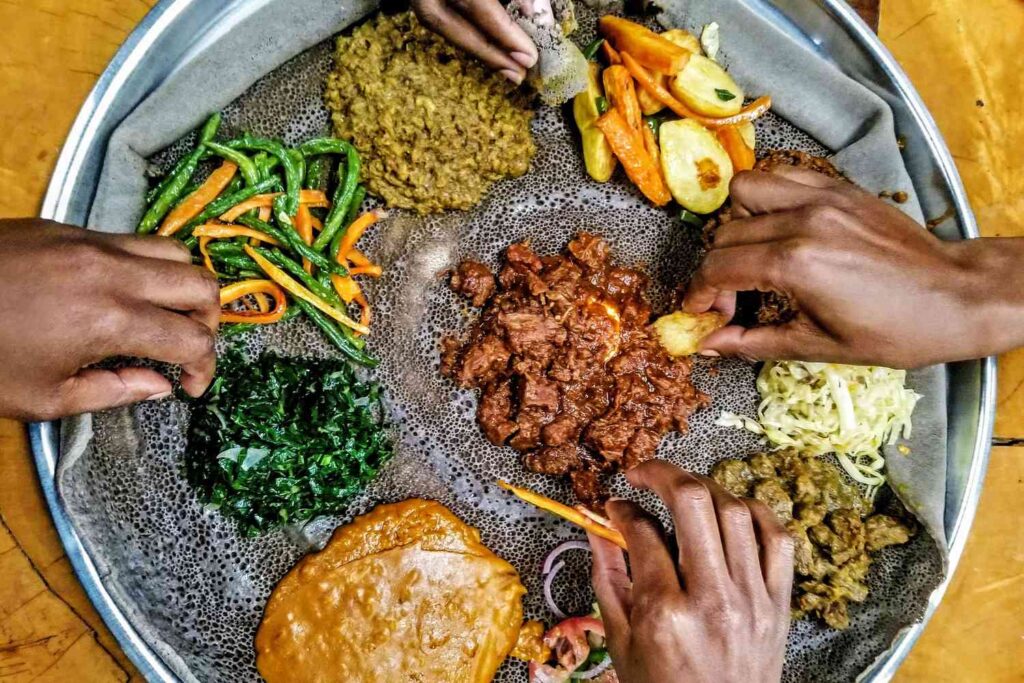Welcome to a culinary journey that transcends borders and time, where the vibrant tapestry of Black American diaspora cuisine weaves together flavors, traditions, and histories. Food has a remarkable ability to serve as a bridge between cultures, allowing us to explore empathy and understanding through the universal language of taste. Join us as we delve into the rich heritage of Black American food culture and uncover the stories behind each dish that reflect resilience, creativity, and community.
Understanding the Black American Diaspora and its Cultural Influence
The Black American Diaspora is a rich tapestry of cultures, traditions, and histories woven together through resilience and creativity. From the shores of Africa to the plantations of the Americas, the journey of African descendants has left an indelible mark on food, music, art, and more. The cultural influence of the Black American Diaspora can be seen in soulful melodies that echo through jazz clubs in New Orleans or vibrant colors that adorn Caribbean festivals.
Through hardship and triumphs, this diaspora has gifted the world with flavors as diverse as gumbo from Louisiana or jerk chicken from Jamaica. Each dish tells a story of survival and adaptation passed down through generations. It’s not just about what’s on the plate but also about honoring ancestors who cooked with love and ingenuity amidst adversity.
Understanding the Black American Diaspora means acknowledging its complexities – celebrating its contributions while recognizing enduring struggles for equality and justice. By delving into this multifaceted culture, we open ourselves up to new perspectives and possibilities for connection across borders and differences.
The Role of Food in Black American Culture and History
Food holds a profound significance in Black American culture and history. It serves as a vessel of tradition, resilience, and community connection. From the rich flavors of soul food to the vibrant spices of Caribbean cuisine, each dish tells a story of survival and adaptation.
Throughout history, food has been a source of comfort and empowerment for Black Americans. It carries the legacy of ancestors who transformed meager ingredients into culinary masterpieces during times of hardship. The act of sharing meals transcends mere sustenance; it is a way to honor heritage and foster unity within communities.
Traditional dishes like gumbo, jollof rice, or jerk chicken are not just about taste but also about preserving cultural identity. These recipes have been passed down through generations, carrying with them the memories and struggles of those who came before us.
By delving into the roots of Black American cuisine, we gain insight into the resilience and creativity that have shaped this vibrant food culture. Each bite is a reminder of strength, ingenuity, and the enduring spirit that continues to thrive today.
Exploring Traditional Dishes and Ingredients of the African Diaspora
The rich tapestry of flavors and ingredients found in traditional dishes of the African Diaspora is a culinary journey like no other. From savory stews to spicy seafood gumbo, each dish tells a story steeped in history and culture.
In West Africa, ingredients like okra, yams, and plantains are staples that have made their way into dishes across continents. The use of bold spices like cumin, coriander, and ginger adds depth and complexity to these flavorful creations.
Caribbean cuisine boasts influences from African, Indigenous, European, and Asian cultures. Jerk chicken with its fiery heat or ackee and saltfish with its unique blend of textures showcase the diversity within this vibrant food tradition.
Soul food in America showcases the resilience and creativity born out of adversity. Dishes like fried chicken, collard greens cooked low-and-slow with smoked ham hocks speak to a history rooted in survival.
Exploring these traditional dishes not only tantalizes the taste buds but also opens a window into the diverse cultural heritage of the Black American Diaspora through food.
The Impact of Slavery on Black American Cuisine
The impact of slavery on Black American cuisine runs deep, shaping the flavors and dishes that have become iconic in the culinary world. Enslaved Africans brought with them a rich tapestry of cooking techniques and ingredients, which merged with Native American and European influences to create a unique fusion of flavors.
During slavery, food was not only sustenance but also a form of resistance and cultural preservation. Despite limited resources, African Americans innovatively utilized offcuts like pig’s feet, chitterlings, and other less desirable parts to create flavorful dishes that have stood the test of time.
The forced labor conditions during slavery led to resourcefulness in the kitchen. The creativity born out of necessity gave rise to soulful creations like gumbo, jambalaya, and collard greens infused with history and resilience. The legacy of these dishes serves as a reminder of the strength and resilience of Black communities throughout history.
Modern Adaptations and Fusion: Blending Traditional Flavors with Contemporary Techniques
Embarking on a culinary journey that merges tradition with innovation, modern adaptations and fusion in Black American cuisine showcase the dynamic evolution of flavors. The art of blending traditional ingredients with contemporary techniques creates a harmonious symphony on the taste buds.
From soul food restaurants infusing classic dishes with a modern twist to chefs experimenting with global influences, there is an exciting wave of creativity reshaping the culinary landscape. Imagine savoring jerk-spiced tacos or enjoying plantain-infused desserts – these innovative creations pay homage to ancestral roots while embracing current trends.
By incorporating new cooking methods and exploring diverse flavor profiles, chefs are not only redefining what it means to cook authentically but also bridging cultural divides through shared dining experiences. Modern adaptations and fusion in Black American cuisine offer a glimpse into the rich tapestry of history and heritage woven into every dish presented on the table.
Using Food as a Means for Empathy and Understanding Between Cultures
Food has a remarkable ability to transcend language barriers and cultural differences. It serves as a universal language that speaks to our shared humanity. When we delve into the culinary traditions of different cultures, like the Black American diaspora, we gain insight into their history, struggles, and triumphs through the flavors and ingredients they cherish.
By exploring traditional dishes like gumbo, jollof rice, or jerk chicken, we not only tantalize our taste buds but also open our hearts to understanding the rich tapestry of experiences that have shaped these cuisines. Through food, we can walk in someone else’s shoes for a moment and empathize with their journey.
Sharing a meal prepared with love and respect for another culture’s culinary heritage fosters connection and bridges gaps between people. It allows us to appreciate diversity while celebrating what unites us: the joy of good food and meaningful conversations around the table.
Conclusion
Using food as a medium for empathy and understanding can truly bridge cultural gaps and foster connections between different communities. The exploration of the Black American diaspora through its rich food culture not only offers a glimpse into history but also provides an opportunity to appreciate the resilience, creativity, and traditions of a diverse group of people.
By delving into traditional dishes, ingredients, and cooking techniques that have been passed down through generations, we not only savor flavorful meals but also gain insight into the experiences and struggles that have shaped Black American cuisine. Through modern adaptations and fusion with contemporary culinary trends, these flavors continue to evolve while honoring their roots.
Food has the remarkable ability to transcend language barriers and societal divides, allowing us to share in each other’s stories and build connections based on mutual respect and appreciation. As we sit at the table together, enjoying dishes that carry centuries of history within them, we are reminded of our shared humanity – our joys, sorrows, triumphs, and challenges.
Let us continue to explore the depths of food culture as a pathway towards empathy and understanding across all boundaries. As we embrace diversity with open hearts and curious palates, may we forge lasting bonds that celebrate the richness of heritage while paving the way for a more interconnected world.
Visit QAWire for more



